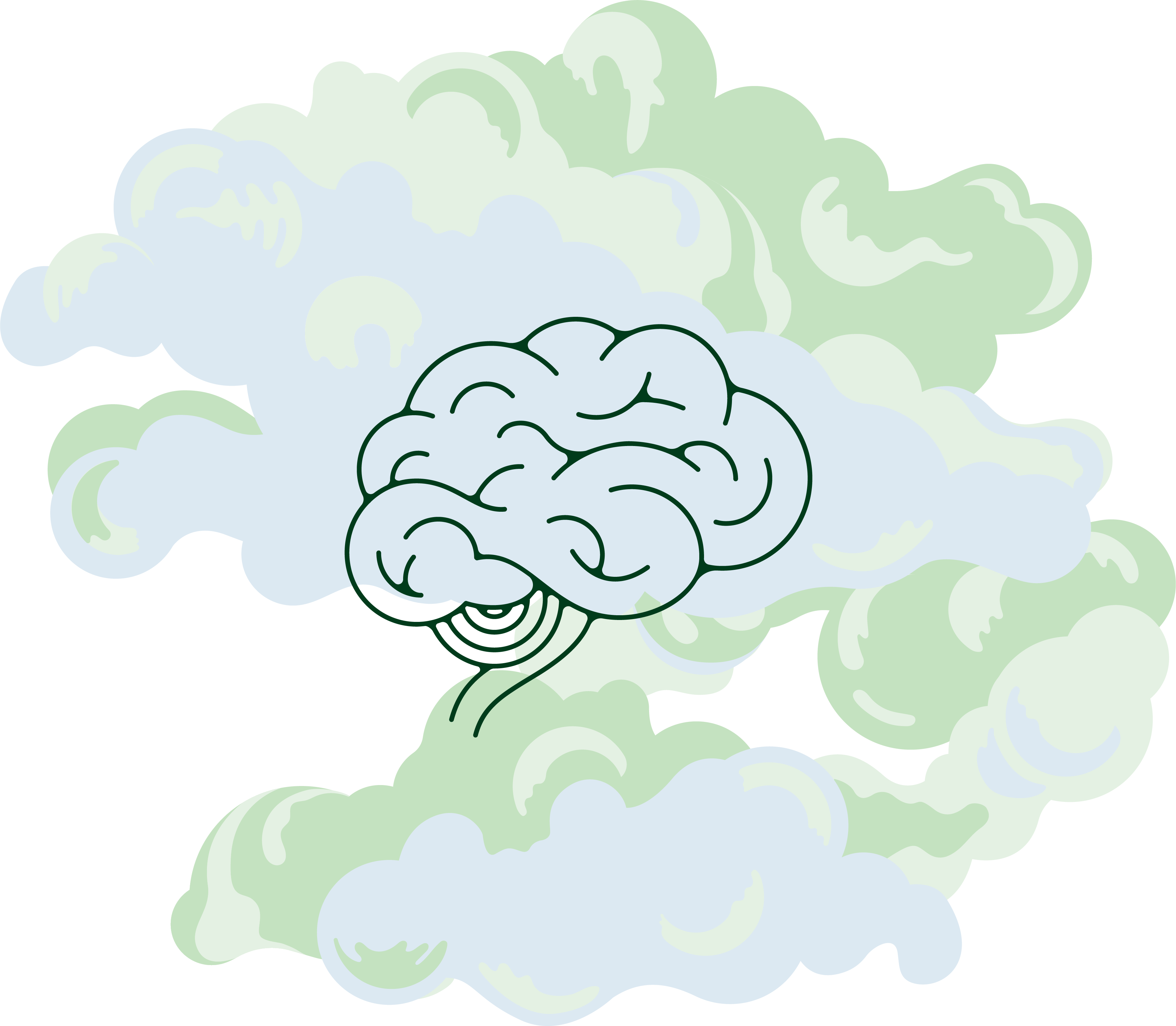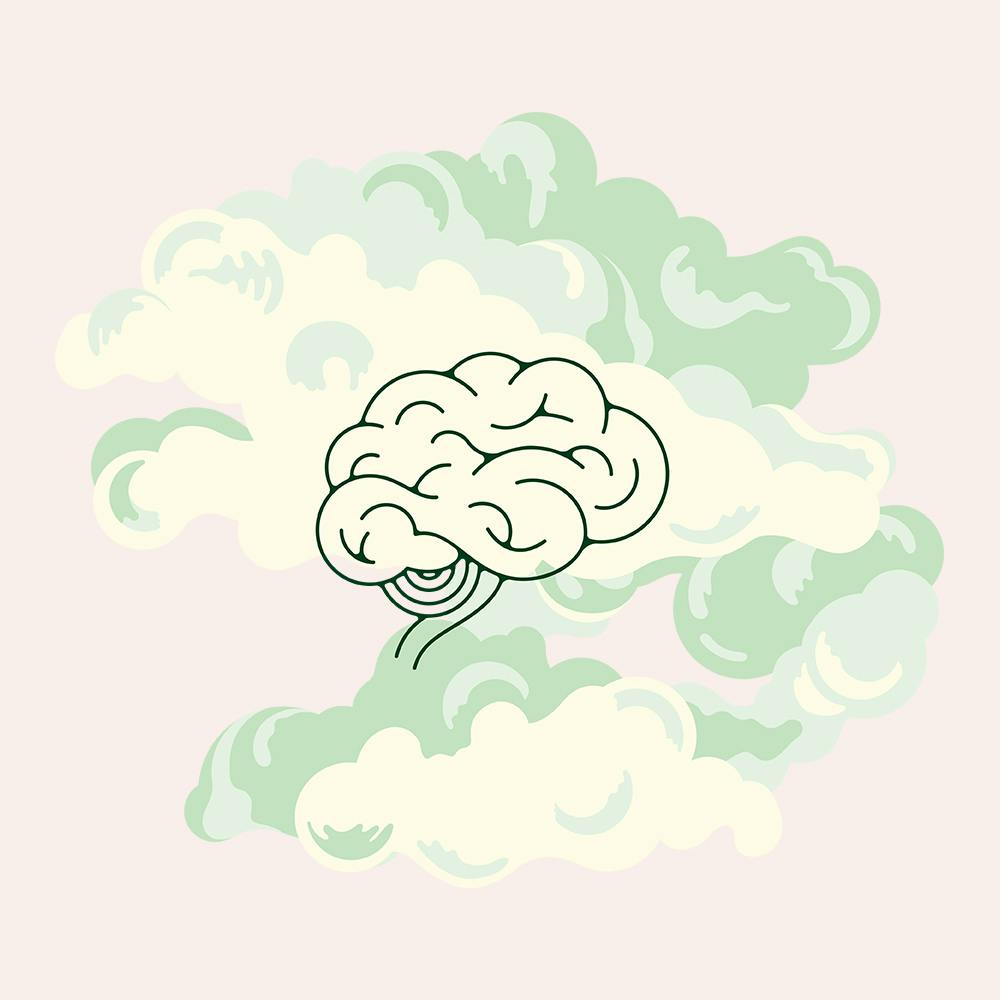Written by Beth Ashley
Illustrated by Erin Rommel
For years, I struggled with my period and post-traumatic stress disorder (PTSD), but I never imagined the two were related—until I was diagnosed with premenstrual exacerbation (PME) and premenstrual dysphoric disorder (PMDD).
I had previously used counselling services to treat PTSD, but symptoms (like unmanageable rage, suicidal thoughts, and panic attacks) would appear fleetingly without an obvious trigger behind them, and I couldn't subdue them with my usual grounding and meditation techniques.
These symptoms would cause a scene then disappear completely, without a trace. The perfect crime. Naively, I accepted this as part of an unfortunate cycle for a long time, until I was offered cognitive behavioural therapy (CBT).
I was originally reluctant to attend therapy, as my symptoms had performed their usual disappearing act and I felt completely fine. Regardless, I saw a therapist once a week and we worked together to understand why I felt dangerously despaired then suddenly fine again (and repeat).
During our ninth session, my therapist held up a number of graphs like she'd discovered rare treasure and asked me if I noticed anything significant. The graphs mapped spikes in my PTSD symptoms throughout the previous 9 weeks, tracing my harmful thoughts like an angry constellation.
The cause was painfully clear: my PTSD symptoms were overpowering me every week before each period started. Then my therapist explained what I would spend the next year learning about: this is the result of PME, a period-specific disorder similar to PMDD.
Both PMDD and PME are often referred to as PMS on steroids. My mum likes to say my PMS is going through its own personal PMS. Put simply, it's PMS but elevated. Big time.
PMDD, like other psychiatric disorders, is experienced individually by everyone who has it, but may display symptoms like:
- feelings of irritability, anger, or hostility
- feelings of sadness, hopelessness or depression
- thoughts about suicide or self-harm
- feelings of tension or anxiety
- feeling paranoid or on edge
- mood swings
- a disinterest in usual activities or relationships
- restlessness
- disturbed sleep and fatigue
- physical symptoms, such as cramps, bloating, breast tenderness, headaches, and joint or muscle pain
PME is similar to PMDD, but it occurs when the symptoms of a pre-existing condition (in my case, PTSD) are heightened during PMS. Other pre-existing conditions that can be intensified before your period include (but are not limited to):
- depression
- anxiety disorders
- eating disorders
- bipolar disorder
- schizophrenia
The key difference between PMDD and PME is that those with PME experience symptoms all month long, but they are exacerbated during the 1-2 weeks before a period starts.
In my case, PTSD is something I find completely manageable day-to-day, but the symptoms become overpoweringly intense during the week before my period, sometimes lasting into menstruation.

The most difficult process to bare when learning about PMDD was realising I'd obviously had it since I was 10 (when I first started my period). Had awareness of this disorder been more amplified, I could have accessed support much sooner. Instead, I spent 13 years thinking that my destructive behaviour was an inevitable part of womanhood, unable to connect the right dots.
Only when I developed PTSD (a more known mental disorder) and it interacted badly with my period, was I able to identify the problem and access support.
Every time I've told someone that I have a form of PMDD, I receive blank expressions resembling the Blinking Man Gif (you know the one). This, unfortunately, includes the male GPs I recently asked about it.
Almost 15% of people with PMDD attempt suicide at some point in their lives, so the need to increase awareness and understanding—especially amongst medical professionals—is crucial to the wellbeing of those who have periods. The lack of research and information surrounding this condition means proper diagnosis and treatment is very tricky to access.
Despite the difficulties, there is good news! PMDD and PME alike can be made easier using a variety of methods, techniques and medications.
“
I spent 13 years thinking that my destructive behaviour was an inevitable part of womanhood
CBD
CBD has been highly praised by many sufferers of PME and PMDD, and I’ve noticed a significant decrease in stress levels and pain intensity myself. Of course, this type of treatment is not “one size fits all” and due to the lack of research into PMDD and PME, there are few officially-recommended treatments at all. After all, it was only officially considered a depressive psychological disorder in 2013.
According to the National Institute on Drug Abuse (NIDA), CBD has shown to reduce stress and symptoms of anxiety-based psychiatric disorders in clinical trials, though CBD actually hasn’t been researched heavily and further study is necessary (similarly to PMDD itself). That being said, over-the-counter painkillers have not been tested on cis women, while CBD has, making it unsurprising that over half of CBD users are female.
Medication
Medication has proven to be an effective option for many people with PME or PMDD. Discuss with your GP what medication may be right for you, such as beta-blockers or antidepressants. This will, of course, depend on your medical history and these medications should not be taken if they haven't been prescribed to you individually.
Tracking your period
This is, by no means, a treatment but it does apply method to the madness (for want of better words). Tracking my period has completely changed my perception of my illness.
Although it feels unfair at times that I am triggered by my own period, a natural part of my biology and experience as a cis woman, there are small joys in understanding PMDD is the one disorder that can be predicted through your phone.
Tracking your period lays out the timeline of when PMDD/PME symptoms are likely to strike, so you know when to start implementing your chosen methods of support. Using this method has brought me much closer to my body since my diagnosis. I feel much less angry towards it, and instead feel like my period leads the way in managing my PTSD effectively.
A self-care routine
“Self-care” is a buzzword we're all finding a bit naff, but proper self-care beyond a bath bomb and a face mask plays a huge part in looking after ourselves effectively. Ultimately, self-care is about prioritising your own health and checking in with yourself regularly.
Ask yourself if you're feeling okay, if there's anything wrong that needs intervention, and what you need from yourself to feel better. Your routine outside of this is completely up to you. Whatever works to lessen your symptoms and keep you comfortable, is worth continuing with.
Community
The rarity of PMDD and PME can make for a lonely journey. That's why online communities like Vicious Cycle have been created. These are spaces where people with PME or PMDD can make friends and share ideas, tips and resources.
The effects of these approaches very much depend on the individual, as our experiences with mental health are so personal. With this in mind, keep your GP clued into your mental health status and with their guidance, trial and error methods at your own pace.






